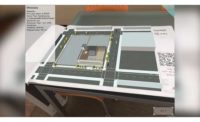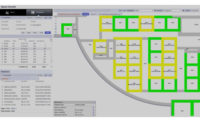Inside the future manufacturing facility for one of New England’s largest MEP/HVAC specialty contractors, J.C. Cannistraro LLC, Jim Lynch rhetorically asks what software Cannistraro uses to control its shop-floor machines. “I bet it’s not Autodesk technology,” says the vice president for Autodesk Inc.’s BIM product group. It’s unusual to take a “Revit model and drive it through to our fabrication tools onto our manufacturing tools and then to drive the shop floor,” he observes.
That presentation took place during Autodesk’s annual AEC Media Summit on May 8 in Boston. The 3D design software company is trying to optimize its manufacturing and design products for industrialized construction methods, such as prefabrication and modular work.
Some Autodesk customers already use BIM tools to control machines in the steel fabrication process. And Autodesk’s precast concrete workflows have been used to automate mesh welding and rebar bending. But Lynch wants to streamline communication and file-sharing capabilities between design and fabrication tools “to marry those two technologies so it’s seamless moving from the BIM model into the manufacturing floor,” he says.
A big part of Autodesk’s solution is Project Quantum. The cloud-based collaboration tool, still in the development phase, aims to create common data environments to give project teams on-demand access to files stored in silos across the team, regardless of the programs or file formats.
And while current workflows typically use “waterfall” methods where a model is fully completed before being passed “downstream,” Quantum filters data phase-by-phase and task-by-task. Kurt Noelte, Cannistraro’s virtual design and construction manager, says Quantum will “change the way we exchange information and allow us to pull information ahead of time.”
Autodesk says this will be particularly useful for workflows such as curtain wall fabrication that “require fabrication knowledge to be part of the design process,” says Brian Farber, Autodesk senior public relations manager. “In those cases, there is a different process and a different set of tools needed," he says. "Quantum allows Revit to do 80% of the building supported by the current process, and to offload the other 20% to new tools and methods.
"Basically, we are ‘decoupling’ the BIM model to allow more flexibility, but keeping the coordination between systems."
Autodesk is also making Revit work better for modular construction models. Lynch says Revit can’t currently distinguish between a regular project model and a modular one. He says Revit should be smart enough to know that a modules’ shape will “have a direct impact on what happens on the shop floor.”
Nevertheless, Cannistraro CEO John Cannistraro Jr. says his firm increased its Revit licenses from one to 50 in the last three years for his growing BIM and virtual design and construction groups.
The firm is also exploring capabilities for Microsoft HoloLens. BIM support specialist Andrew Heiser adapted the Navisworks model for the firm’s new 157,000-sq-ft manufacturing facility to be viewed in the augmented-reality headset. He built the HoloLens model in his spare time during a four-week period, and says it could be used for training or facilities management. “As it takes less and less time to make the model,” Heiser says, “the value will increase.”







Post a comment to this article
Report Abusive Comment